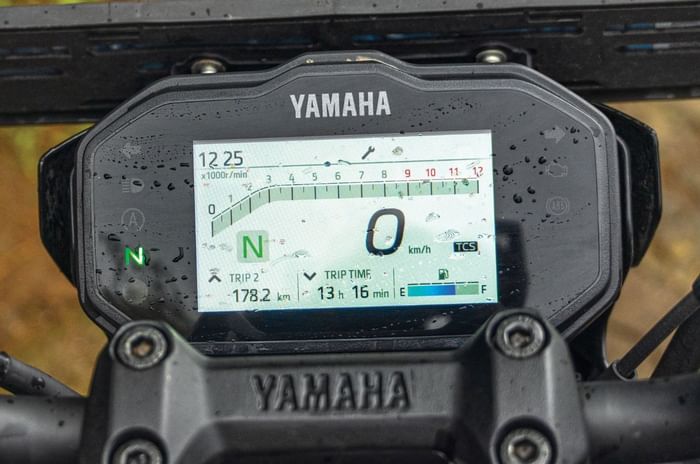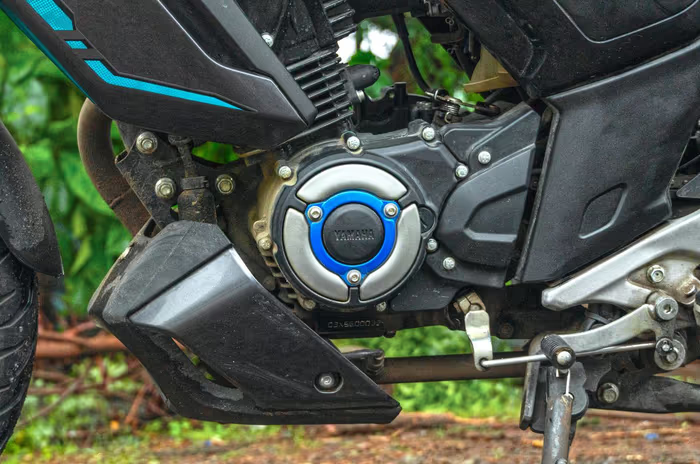A new variant featuring more connected technology and a mild-hybrid system.
Yamaha’s FZ family has been around long enough to earn the “old guard” tag in the 150cc space. It’s the motorcycle that brought muscle to the masses when it first launched and has since become a go-to for smooth, reliable everyday riding along with big-bike looks. Over the years, the bike has received numerous updates, and the latest one brings in some interesting new features.
Enter the FZ-S Fi Hybrid, a variant that doesn’t promise earth-shattering performance, but what it does offer is more efficiency and a big step up in tech and features. The big question, though, is this: does the hybrid tech make a difference, or is it just a buzzword?
Yamaha FZ-S Fi Hybrid design and features (9/10)
Muscular design with added TFT, Bluetooth, and hybrid tech
Visually, Yamaha has played it safe, and there are no major design changes apart from some new colours and refreshed indicators. This is still unmistakably an FZ, and it continues to have that muscular streetfighter stance that made it so popular in the first place. Build quality is mostly very good, which is typical of Yamaha.

A noticeable gap between the seat and the tank
However, what caught my attention was a noticeable gap between the seat and the tank that effectively gives you a peep at the cylinder head. This Fi Hybrid variant is also available in an exclusive shade of grey and blue. The new colours, a touch of blue on the engine case, new switchgear and a brand-new TFT are the only ways to differentiate it.

Feature-packed TFT with good legibility is a boon
The new 4.2-inch full-colour TFT display is a big step up from the drab LCD units we’re used to in this segment. It’s crisp and well laid out and offers Bluetooth connectivity through Yamaha’s Y-Connect app. The features list includes turn-by-turn navigation, call/SMS alerts, phone battery status, last parking location, and even malfunction notifications. It’s more tech than most 150cc buyers expect, and that’s a good thing.

New switchgear is well-finished but isn’t too tactile
The LED headlamp does a decent job with illumination and is reliable for any late-night commutes. While single-channel ABS is standard, Yamaha has even thrown in traction control, which, with this amount of power, feels about as necessary as a raincoat in a desert. You’d have to ride through an oil spill to get it to kick in, and while it is a nice thing to have, dual-channel ABS would have been a more valuable safety feature.
Yamaha FZ-S Fi Hybrid position and comfort (9/10)
It has a relaxed, upright seating position with a spacious, well-padded seat
Swing a leg over, and you’ll find that Yamaha gives you a commanding yet relaxed posture, which is ideal for city commutes and short highway stints. The seat is flat, spacious and adequately padded for both the rider and the pillion.

At 790mm, its height remains accessible for most riders, and the bike’s 138kg kerb weight means it’s easy to manoeuvre in tight traffic. Add to that a well-judged footpeg position, and what you get is a very accommodating rider’s triangle for daily riding, with a hint of sportiness thrown in.
Yamaha FZ-S Fi Hybrid performance and refinement (8/10)
Refined and smooth in the city, but performance feels more 125cc than 150cc
The 149cc air-cooled SOHC engine makes 12.4hp and 13.3Nm; on paper, it’s the same as the regular FZ-S. But the big news here is the Smart Motor Generator (SMG), which supports the crankshaft by delivering assistance at low RPMs. This system is similar to what you’ll find in the likes of the TVS Jupiter, but it’s hard to feel the system at work in the Yamaha.

Our performance tests also show very similar figures to the older model, so it’s safe to assume that there are no real performance gains here. What has improved is the fuel efficiency, but how much of that is down to the hybrid tech and how much is thanks to the new start/stop system is unclear. What we can say for certain is that the start/stop system works well and is one of the best we’ve experienced so far. It restarts quickly and silently when you pull in the clutch, even if you accidentally stall the engine, which is a slick little party trick.

Out on the road, the motor is quite refined and tractable, with barely any vibration even at higher revs. The power delivery is rather linear, and the motor will happily pick up from 30kph in 5th gear. The performance is decent till about 80kph, but anything beyond that feels strenuous. Overall, it feels closer to a quick 125cc bike than a 150cc or 160cc one, and while the FZ is effortless to ride, it certainly isn’t exciting.
Yamaha FZ-S Fi Hybrid ride comfort and handling (9/10)
Well-balanced in the city, but its firm suspension compromises comfort over rough roads
The chassis is unchanged, and that’s not a bad thing – mostly. The steering is light, the turning radius is tight, and the bike feels nicely balanced in the city. The suspension setup has a firm edge to it, which results in decent handling but comes as a compromise in city comfort.

For a motorcycle whose engine has evolved in the direction of being a city commuter, the suspension should have become a bit softer as well. High-speed stability is decent, though this isn’t a bike that eggs you on to carve corners. Braking duties are handled by discs at both ends, and while the bite isn’t razor-sharp, it’s progressive and confidence-inspiring.
Yamaha FZ-S Fi Hybrid price and verdict (9/10)
Tech-loaded, fuel-efficient commuter that feels overpriced for the performance it offers
At Rs 1.45 lakh, the FZ-S Fi Hybrid costs about Rs 10,000 more than the standard FZ-S. While you get better efficiency and a TFT screen with Bluetooth, this bike is priced higher than the top versions of the Bajaj Pulsar N160 and TVS Apache RTR 160 4V. Those motorcycles offer vastly better performance, upside-down forks and dual-channel ABS.

What Yamaha has created here is a good-looking city commuter that brings premium features and better fuel economy. But that comes at a steep price, and if you couldn’t care less about the TFT and don’t mind being your own stop/start system, you won’t be missing out by settling for a more affordable variant from the FZ line-up.
Also see: 2025 Royal Enfield Hunter 350 review: Meaningful changes

